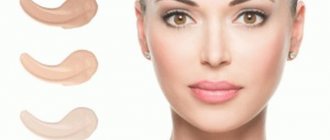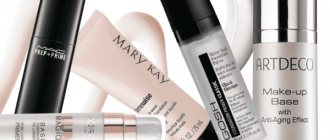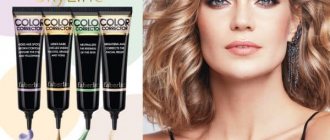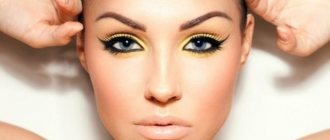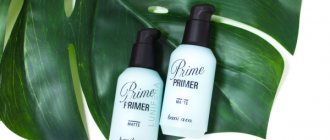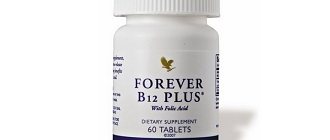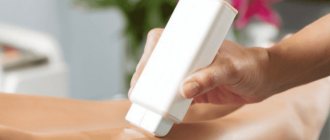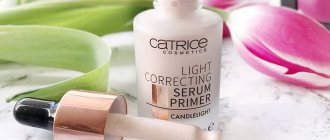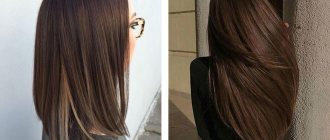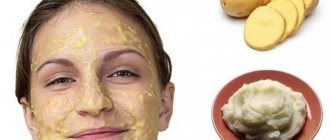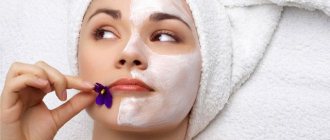Most girls now prefer to use gel polish for nail design, since it is highly wear-resistant and remains in the same condition for up to 3-4 weeks. To save money, many people switch to decorating their nails at home, but keep in mind that to get a positive result, you must follow all the details of the procedure.
One of the important steps that is often ignored by women is the use of primer. The composition is important for long-term preservation of manicure, but not everyone knows how to use it, and also whether it is necessary to dry the primer in a lamp, since masters have different opinions on this topic.
What is a nail primer or bonder for?
Nail primer also performs a degreasing function, but in addition, it improves the adhesion of the nail to the material, lifting the scales of the upper layers of the nails, and kills harmful microorganisms that can multiply under the artificial surface. Thus, in addition to degreasing, it also has a protective function.
Bonder, bonder or pre-primer degreases the nail plate without affecting its deep layers and is usually used before applying an acidic or acid-free primer (or non-acidic).
Thus, you see that the line between all these products is very thin and often everything is written on one package at once (see photo), so it is best to choose based on the condition of your nails. For example, if your nails are naturally dry, then you shouldn’t overdry them - choose a product for surface degreasing. If, on the contrary, your nails are constantly shiny, it means they are quite oily and require careful dehydration.
We invite you to read: First pregnancy - everything an expectant mother needs to know
At the same time, there is no need to worry about the condition of the nail plate: all these products are quite gentle - they are not capable of disturbing the water balance in the nail plate, drying it out and making it more brittle.
Other brands
Other effective bases are:
- CND Base Coat is an American brand recognized as the reference base for extensions. The price is more expensive than its analogues, but the quality corresponds to the price. The consistency is economical, which allows you to significantly reduce its consumption during application. Thanks to the convenient brush, the job is done quickly and effortlessly.
- Beautix UVBase - a French manufacturer ensures long-lasting results of up to 2 weeks. Good wearability of the material, high adhesion, due to which the base does not peel off from the surface of the nail for a long time. The bottle volume is 15 ml, the price is lower than previous analogues. The only drawback is that Beautix UVBase is not recommended for leveling the nail plate.
- UNO Rubber Base is a product intended not only for healthy, but also thin nails that are prone to splitting. The base is removed without a grinding machine or a special file. The product evens out the nail plate and is economical, but many women experience discomfort during the drying process.
- Vogue nails is a rubber base for further application of gel polish. The product is suitable for French manicure. It is economical due to its thick consistency. Bottle volume – 10 ml.
- KLIO is a foundation from a Russian manufacturer with medicinal properties. Thanks to it, nails are strengthened and nourished, the product is compatible with many gel polishes. The price is higher than that of foreign manufacturers.
- Bluesky Rubber Cover is a brand from a Chinese manufacturer with a dense consistency. The foundation lasts a long time, the result lasts 3-4 weeks. The product is wear-resistant. Its cost is below average, but the bottle is not stored for a long time - its shelf life after opening is no more than 6 months.
- Lianail SOBS-02 - a domestic brand that does not weigh down the nails and is easy to apply due to its fluid structure. The bonder layer is removed with a hard file or mechanical soaking. To even out the nail plate, one layer may not be enough.
- TNL BASE GEL - a Korean manufacturer offers a product that has a medicinal and harmless composition, which contains only natural ingredients. The low price of the product is the main advantage. The only drawback is that the consistency is not thick; if applied carelessly, the product flows further than the nail plate.
How does a bonder differ from a primer?
It is not enough to know what a nail primer is to perform a manicure at a professional level. For proper extension you will also need a bonder. It is used to treat the nail before applying a coating with decorative properties.
The bonder determines the strength of the connection between the nail and this coating. It helps to create a solid base and make the work high-quality and durable. The primer prepares the work surface for uniform application - that's what it's for.
Bonder guarantees high-quality grip. It does not contribute to degreasing, disinfection and dehydration, but creates a protective film on the surface.
Composition of nail primer
The primer is a transparent liquid that is odorless and has a consistency similar to ordinary water. It is contained in a plastic or glass bottle with a brush, similar to the brush of any varnish. The bottle is most often made opaque to ensure the safety of the product.
The composition of primers differs depending on the manufacturer, but they are usually divided into two large classes: acidic and acid-free. Fragrances and dyes are usually excluded from the composition of products to ensure the safety of people with hypersensitivity and allergy sufferers.
The acid primer contains methacrylic acid in a concentration of 30 to 100%. Thanks to it, the scales of the top layer of nails form a strong bond with the material, so this primer is recommended for use when acrylic nail extensions. Acid primer dries out the nail plate greatly, so it is better to use it for oily nails and springboard-shaped nails.
An acid-free primer is more gentle and less dangerous for the skin, but is also slightly inferior to an acid primer in terms of the effectiveness of adhesion of the material to the nail plate. This type of primer is recommended for use when applying gel extensions and coating nails with gel polish. It also removes oil from the nails, dries them and removes harmful microorganisms, forming a reliable connection between the scales of the upper layers of the nails and the artificial material.
To cover nails with gel polish, the use of a primer is not necessary, provided that it stays on the nails for a long time and without chipping. Otherwise, to improve the adhesion of shellac to nails, it is recommended to use any acid-free primer or bonder.
When applying gel nail extensions to tips or forms, it is enough to use any acid-free primer. However, sometimes it needs to be applied 2 times to increase the reliability of the adhesion. Please note that when applying gel extensions to tips, you should avoid getting primer on them: this can lead to cracks. The primer is also applied when correcting nails, but only on the regrown part of the natural nail, avoiding contact with the skin.
We suggest you familiarize yourself with what products to eat to have a beautiful face
Read also: What to wear with flat shoes
When extending nails using acrylic powder, it is recommended to use an acid primer as the most reliable in terms of adhesion of the nail surface to the artificial material. It does not affect the color of acrylic and reliably protects it from cracks and peeling, of course, provided it is used correctly.
Important
If the primer gets on areas of the skin, it must be thoroughly rinsed with plenty of warm water to prevent allergic reactions and irritation.
Many girls who use primer on their own are often interested in the question of whether it is necessary to dry the primer in a lamp when using gel polish and acrylic extensions.
Experts say that the primer dries quite quickly, within a few seconds to a minute, so it is not necessary to dry it in a UV lamp.
However, some manufacturers produce primers for which drying in a UV lamp is necessary, in which case this must be indicated in the attached instructions. When choosing a primer and the large variety of them, it is often difficult to decide which primer is best. First of all, you should take into account that you should not choose very cheap brands, since their use can have an extremely negative impact on the condition of natural nails and the stability of the extended manicure.
Before choosing a primer, you should consult with a professional nail technician, who will recommend a primer depending on the condition of the nails and the desired procedures.
At the moment, one of the best recommended primers, which has good reviews from masters and clients, is primer. “Runeil” and “Lady Victory” also performed well.
For better interaction and adhesion of the primer and material for extensions or long-term coverage, it is recommended to use products from the same manufacturer.
Answers to popular questions from experts
Which primer is best to use?
Manicurists prefer to use acid-free compounds. They have good adhesion, but are not so destructive to nails. Acidic ones are used for very problematic hands, with damp skin and oily nail plates. And they should be applied only to the free edge, the ends. But for the main part they still take an acid-free product.
Do I need a degreaser if I use a primer?
When using an acid-free product, a degreaser is needed. It not only removes epithelial particles remaining after processing with files and cutters, but also additionally removes excess moisture. The acid primer itself dries the plates well. Therefore, they do not use a degreaser with it, but wipe the nails from dust with lint-free wipes.
Price
How much does primer cost? The price depends not so much on the type of product, but on the volume and brand of the manufacturer. Thus, the acid primer “Kodi” will cost 150 rubles for 10 ml, and the same product from the Victory brand will cost 300 rubles for 12 ml.
Many people believe that another primer will be cheaper. The price of an acid-free product is sometimes even higher. Thus, the “Naomi” product costs 180 rubles per bottle (12 ml), and “Gel Neil Prep Step 2” from an American manufacturer will cost at least 700 rubles (15 ml).
Compound
The liquid has a thin consistency, watery or gel-like, without any tint and often no odor. Packaging, as a rule, is opaque, since light has a destructive effect on the structure of the composition and reduces shelf life. From a chemical point of view, the composition is complex:
- methacrylic acid;
- ethyl acetate;
- 2-hydroxyethyl matacrylate.
It is these substances that give the product the ability to bond the artificial plate to the natural one.
Depending on the amount of acid contained, primers are classified into acid-free and acidic. The former do not completely lack acids, they are simply contained in smaller quantities and have a less aggressive effect on the nail and do not dry it out. For weakened, thin nails, the following types of products are recommended: acid-free primer and pre-primer. The latter is the most gentle of all possible pre-coats.
It is distinguished by its soft action, it does not penetrate into the deep layer of the plate, maintains the moisture balance, and prevents dehydration.
Terms of use
Even beginners can use a bonder - it is easy to apply, dries quickly and eliminates unpleasant surprises during use. First, you need to treat the client’s hands with an antiseptic spray. Then do a hygienic manicure - remove the old coating using cutters or special solutions and clean it. It is important to get rid of rough skin and effectively eliminate pterygium. It is necessary to process the plate with a sanding file.
To prevent sawdust particles from interfering with your work and getting into your lungs, turn on the manicure hood or vacuum cleaner. Primer can be applied to buffed nails, and only after it dries, bonder can be applied. Do not allow the product to flow under the cuticle, otherwise you will have to redo everything. The final stage is drying in a lamp. After this, you can apply other formulations, including extension gel. If the bonder is used as glue for tips, it should not be dried under ultraviolet light - then already extended nails will be polymerized. It is recommended to apply the product using driving movements with a brush, starting from the middle of the nail.
Composition of nail primer
The primer is a transparent liquid that is odorless and has a consistency similar to ordinary water. It is contained in a plastic or glass bottle with a brush, similar to the brush of any varnish. The bottle is most often made opaque to ensure the safety of the product.
The composition of primers differs depending on the manufacturer, but they are usually divided into two large classes: acidic and acid-free. Fragrances and dyes are usually excluded from the composition of products to ensure the safety of people with hypersensitivity and allergy sufferers.
Acid and acid-free primer
The acid primer contains methacrylic acid in a concentration of 30 to 100%. Thanks to it, the scales of the top layer of nails form a strong bond with the material, so this primer is recommended for use when acrylic nail extensions. Acid primer dries out the nail plate greatly, so it is better to use it for oily nails and springboard-shaped nails. When using it, you should be careful not to let the product come into contact with the skin around the nails: this can cause burning and redness. The primer dries very quickly - this is easy to understand by the resulting white coating on the nails, which gives a signal that you can continue working.
An acid-free primer is more gentle and less dangerous for the skin, but is also slightly inferior to an acid primer in terms of the effectiveness of adhesion of the material to the nail plate. This type of primer is recommended for use when applying gel extensions and coating nails with gel polish. It also removes oil from the nails, dries them and removes harmful microorganisms, forming a reliable connection between the scales of the upper layers of the nails and the artificial material.
Primer for gel polish and shellac
To cover nails with gel polish, the use of a primer is not necessary, provided that it stays on the nails for a long time and without chipping. Otherwise, to improve the adhesion of shellac to nails, it is recommended to use any acid-free primer or bonder.
Primer for gel nail extensions
When applying gel nail extensions to tips or forms, it is enough to use any acid-free primer. However, sometimes it needs to be applied 2 times to increase the reliability of the adhesion. Please note that when applying gel extensions to tips, you should avoid getting primer on them: this can lead to cracks. The primer is also applied when correcting nails, but only on the regrown part of the natural nail, avoiding contact with the skin.
Primer for acrylic nails
When extending nails using acrylic powder, it is recommended to use an acid primer as the most reliable in terms of adhesion of the nail surface to the artificial material. It does not affect the color of acrylic and reliably protects it from cracks and peeling, of course, provided it is used correctly.
The best companies
What is a nail primer and why it is needed is now clear, all that remains is to review popular products.
Lady Victory acid-free primers perfectly degrease, provide reliable adhesion and prevent peeling of the coating. Ideal for beginner manicurists due to the absence of acidic substances in the composition. Price range from 80 rub. up to 350r. Manufacturer – China.
Le Vole Ultra Bond is ideal for working with gel and acrylic. The compositions of this brand disinfect and clean the nail well, while maintaining the natural pH level. Price range from 250 rub. up to 400 rub. Manufacturer – USA.
Kodi Professional Ultrabond has a gentle composition, without methacrylic acid. Used when working with gel and for acrylic extensions. Average price – 450 rub. Manufacturer – USA.
EZ Flow produces products without dyes or fragrances. The brand's primer dries quickly, leaving a white residue. The brand produces all types of materials for working with different nail coatings. Production - USA. Price range from 500 rub. up to 1100 rub.
IBD has been known on the market for over 30 years. The brand produces products suitable for people with hyperhidrosis and very brittle nails. IBD stick contains methacrylic acid, which prevents peeling of materials. Product cost from 300 rub. up to 900 rub. Manufacturer – USA.
Runail Professional Primer Acrylic System produces a product for acrylic extensions. Has excellent adhesive ability. Manufacturer – Russia. Price from 200 rub.
Yoko APR-15 is suitable for both gel and acrylic. This primer is acid based and its adhesive properties are significant. Price 150 rub. Manufacturer – Russia.
TNL Professional is also used for strong adhesion of nail and extension materials. The brand produces both primers with and without acid. Cost - from 180 rub. up to 240 rub. Production - South Korea.
Bluesky reduces the likelihood of coating peeling and increases adhesion. It is combined with both gel and acrylic, and is also used when coating with gel polish. There is no methacrylic acid among the ingredients. Price range from 140 rub. up to 250 rub. Production is located in China.
Irisk is a professional gel-free primer. Produces products for acrylic and gel.
Price range from 150 rub. up to 440 rub. Made in the USA. Available in bottles with volumes from 10 ml to 15 ml. The brush is usually included.
Three types of lamps
Choosing a lamp is a fairly popular question and has its own nuances. Three types can be distinguished.
First, LED (or light-emitting diode) lamps. Compact, lightweight and long-lasting, characterized by a high polymerization rate. Of the minuses: some types of varnishes can take a very long time to dry or may not dry at all.
Secondly, UV (or ultraviolet) lamps. The cost is significantly lower than the previous ones, but the polymerization time increases.
Thirdly, hybrid lamps that combine the positive aspects of the above-mentioned units.
How to dry gel polish
Gel polish should be dried following several rules:
Each layer is polymerized. First, the base is applied by rubbing in, then with leveling, after which the hand is sent into the lamp for the first time. Next they apply a flower bed and also dry it. Then, for brightness, they paint with another layer and it is polymerized
A finishing coat is applied to the dry gel polish and dried. It is important to position your hand correctly for the polymerization process. To properly dry gel polish, the brush should lie flat, parallel to the table surface.
If it is turned on its side, the material will flow. The fingers should not be pressed together; the hand should be relaxed. The brush cannot be removed from the “oven” during the entire polymerization time. Otherwise, the process will be disrupted, the coating will dry unevenly, which is why detachments will appear later. You should dry your thumbnails with gel polish separately in a lamp. The hand is placed inside so that the plate is parallel to the tabletop. You should not put your thumb on its side, this is also fraught with the appearance of streaks and poor-quality polymerization.
All layers of gel polish must be dried until completely cured, maintaining the required time. When the material has cooled slightly, it is necessary to remove residual stickiness. Almost all flower beds have it, but this does not mean that the coating has not dried out.
Which lamp is better
Gel polish should be dried with a lamp suitable for this product, this can be understood from the information on the bottle. It is marked with:
- UV – ultraviolet device only;
- LED – an LED lamp should be used;
- UV/LED – the product dries under both types of radiation.
If there is no such marking on the bottle, it means that it can be polymerized in any device, including a hybrid type.
A lamp with new lamps with a power of 36-48 W dries gel polish better, regardless of the type. In this case, its real indicator corresponds to the nominal one, and it is impossible to make a mistake with the duration of the process and leave the layer of material wet. Such devices have several light sources, so the nails are evenly exposed. And their different parts dry out equally well.
Problems arise with 9 and 18 W devices. They require long-term polymerization, but even if the curing time is observed, the product may not dry out in deep layers. This is caused not only by insufficient power, but also by a small number of radiation sources.
Gel polish dries quickly with an LED or hybrid lamp with a power of 36-48 W. In addition, this type of lamp lasts longer during active use. The LEDs have the same qualities, working together for 50 thousand hours. And ultraviolet lamps can maintain the brightness as at the beginning of operation, but their power decreases after 2-3 months of active use.
If without a lamp at home
It is possible to polymerize gel polish without a lamp at home using improvised means, but you should not count on a good quality manicure:
- Use ice baths. Dip your fingertips into a bowl with water and pieces of ice and hold for up to 10-15 minutes. The cold will harden the coating, but your hands will also get very cold.
- First place the bottle with the product in the refrigerator. After this, it is applied to the nails. Gel polish thickens significantly, which is why it dries faster. But it can lie on the plates in lumps.
- Special catalysts are used. This is an ointment, spray or gel that is applied over the flower bed. Catalysts are produced by different companies.
- With the help of the sun's rays. You can dry gel polishes by going outside, but not in the shade. After all, the sun's rays are also ultraviolet. But the procedure will take much longer, and you cannot vouch for the longevity of the manicure.
- Using a medical lamp with blue radiation (Minin reflector). It emits infrared rays, not ultraviolet, so the polymerization procedure will also be long. And the quality of drying will leave much to be desired.
Some people recommend using a hairdryer or fan to harden the coating. But these are the least reliable methods. The flow of warm air will cause gel polish to ripple rather than dry.
How to replace primer (nail degreaser)
The primer may not always be at hand or will run out at the most inopportune moment, so the question often arises of what can replace it. You can find advice on the Internet that regular nail polish remover with acetone is also suitable for degreasing nails . This life hack can really be used: acetone can dry out the nail plate, but you should pay attention to the fact that the product does not contain any oils - their presence will cause problems.
Vinegar or alcohol can also be used instead of nail degreaser , but no home remedy can lift the scales of the upper layers of nails to ensure high-quality adhesion of materials.
Boric acid as a nail degreaser or cologne is also cited by many as an alternative to primer in order to save on materials. However, it seems to me that this is not worth it: the price of the primer is quite adequate in terms of all materials for nail extensions and long-term gel polish coating. And its consumption is so minimal for one procedure that you shouldn’t neglect having a small bottle of nail bonder in your arsenal.
What to look for when choosing a product
The modern market provides a huge number of products in the beauty industry. How to choose the appropriate type of product and which company to pay attention to depends only on your personal desires and financial capabilities. To do this, the following selection criteria should be taken into account:
- Value for money. A quality base must match the price. But you don’t have to pay attention only to expensive companies. For example, Kodi gel polishes are of decent quality and average price.
- Components that affect the application method. Remember that it is better to choose the base and top from the same manufacturer. Their composition is designed to complement each other. A base with keratin strengthens the surface of the nails and creates a long-lasting manicure. Many masters use this base separately for nail care.
- Density and structure. It is necessary to take into account the consistency of the base itself. Very liquid will flow down and fall on the cuticle and side ridges. The dense base does not flow onto the cuticle and has the property of being evenly distributed on the surface of the nail.
- Structure of the nail plate. For damaged and weakened nails, a base coat with added vitamins is produced. They have a dense structure, which allows you to hide defects on the nails.
Primer and base for nails: what is the difference?
If in makeup base and primer are synonymous, then in manicure they are two completely different things. But it is not at all critical for an “amateur” to confuse them with each other. The primer is usually used by professionals in salons. At home, one base for colored varnish is enough.
Before we start talking about the difference between a primer and a nail base, you need to understand what each of them is.
- The nail base looks like an ordinary transparent varnish, which, however, plays an important role. It helps prepare your nails for color coating: smooth their surface and fill in any unevenness. The varnish adheres better over the base and ultimately lasts longer. There are bases for both regular varnish manicure and for working with gel polish.
- A primer is usually a liquid product that cleans, degreases, and dries the nail plate. It does not remain on the nails as a separate coating. Unless we are talking about a special base with a “primer” function. It is usually a little denser and more stringy and needs to be dried under a UV lamp. A layer of such a base improves adhesion to artificial turf and, at the same time, protects the nail from the effects of chemical components “from above.” So most often the “primer” is applied when doing manicures with gel polish and when doing nail extensions.
From this alone it is clear that primer and base are not very similar products to each other, with different purposes.
The main differences between nail base and primer
1
If a nail base is a mandatory first coat when creating a manicure, then a primer is rather an additional product. In general, you can do without a primer. But professionals still prefer to use it.
2
Primer is, first of all, a product for salon manicure. The base is used both by masters in salons and by those who do their own manicures at home.
3
The products differ greatly in texture: the base is viscous, like regular nail polish, and the primer is usually liquid, almost like water.
4
Primer is, on the one hand, protection, on the other, “double-sided tape” for manicure. The base is a complete coating that physically protects the nails, evens out their surface and makes them smooth.
5
The base is necessary for all types of manicure. The primer is used mainly for nail extensions, separating their surface from the dense texture of the gel.
Did you know the difference between a primer and a nail base?
Main advantages
Some masters mistakenly underestimate this product, preferring outdated formulations. This is all due to the fact that he appeared on the nail industry market not so long ago, but has already managed to win the trust of professionals. Every year new formulas appear, the product is improved and allows you to achieve amazing results. New generation bonders can be found in the Royal Gel online store. The list of their main advantages:
- provide maximum adhesion to any base - regular or rubber, transparent or colored;
- have a convenient brush with which you can evenly distribute the product over the nail plate;
- are universal in use - can be used for natural and extended nails;
- economical in consumption - one bottle is enough for several months of daily use;
- Unlike gel polishes, the special texture of the bonder eliminates the formation of lumps and unevenness - its application does not require special skills.
